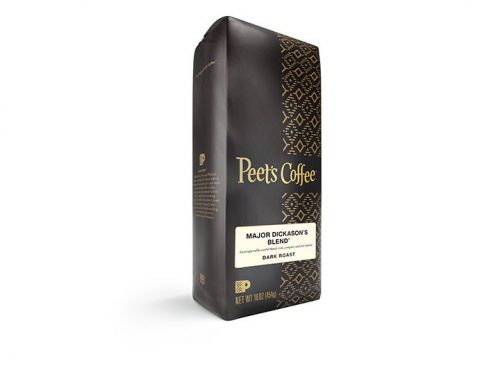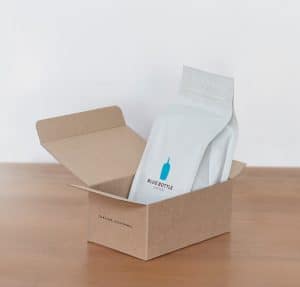Here are the best coffee beans for making French Press coffee.
At A Glance:
- Most Aromatic Coffee for French Press: Joe’s Coffee House Celebes Kalossi
- Best Bold Flavored Coffee Beans: Peet’s Coffee Major Dickason’s Blend
- Best Chocolatey Coffee Bean Blend for French Press: Blue Bottle Coffee Giant Steps
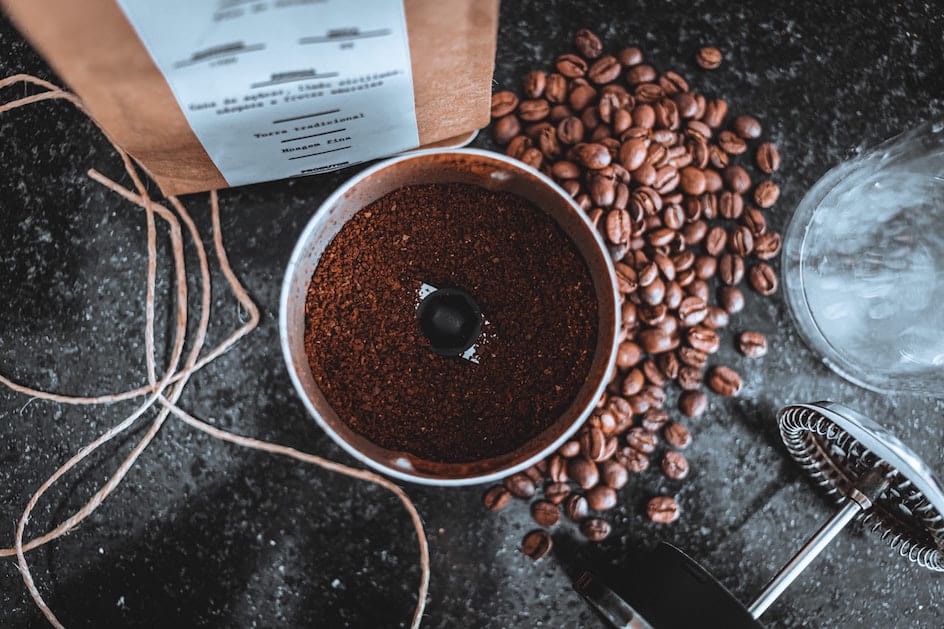
Remember, when making French Press coffee, the key, though, lies in the beans, and how you grind them. Get it wrong, and you’ll end up with a weak-flavored mug of sludge rather than the nuanced cup of coffee you were expecting. That’s why we’ve put together our picks of the best coffee for French press, to help you avoid the common pitfalls and find delicious coffee beans that will suit your palate.
How to Brew the Best French Press Coffee
Joe’s Coffee House – Celebes Kalossi Coffee
This is a full-bodied, creamy dark roasted coffee with an impressive lineage and a wonderfully herbal aroma with hints of licorice. The sweetness of this Indonesian coffee is right at home in a French press.
Darker than a DC Superhero Movie – Getting the Right Roast
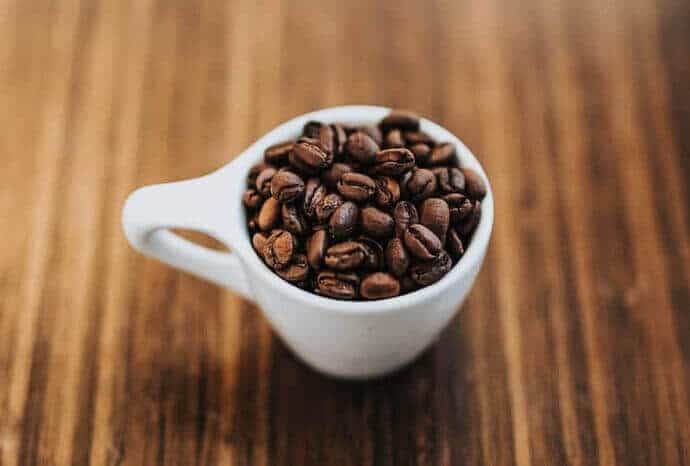
Traditionally, French press coffee is brewed using a dark roast, because the longer roast time brings out the flavorful oils in the beans. It also tamps down any acidic notes it might carry. Dark roasted coffee beans are normally quite bitter when used in other brewing methods, but when you use a French press, bitterness is reduced which brings out the best of the coffee’s flavor (1). The slow extraction process brings out your beans’ smoky, rich character, and results in a sweeter tasting cup of coffee.
It’s not a hard and fast rule, of course. While light roast beans, like these, are better for cold brew, medium-roast coffee beans can often be a great choice for French Press. This roast also provides a lighter, more nuanced flavor than the bolder dark roasts. This is why they are favored by Third Wave coffee lovers.
Dealing with the Daily Grind – What’s the Best Coffee Grind for French Press?
Simply put, grind your coffee beans on a medium-coarse setting, though you should experiment to see which setting tastes the best to you. The larger surface area of coarse ground coffee beans will result in more of the brighter flavors being extracted from the coffee, reducing bitterness in favor of a sweeter taste.
Take note of your grind size so you can make adjustments later: grind a little finer next time if your brew was weak, a bit coarser if you’re tasting a lot of unpleasant, dish-raggy, over-extracted flavors.
Nick Cho, Co-Founder of Wrecking Ball Coffee Roasters
Any well-versed barista will advise you to steer clear of pre-ground coffee for two reasons. First, it will usually be too finely ground for the mesh filter attached to the French press’ plunger. This means you’ll end up with a gritty cup of coffee when you finish brewing. While you’ll never completely get rid of finely ground coffee beans with the French press, a fresh coarse grind minimizes them and results in a texture closer to silky.
The second reason is the flavor. The longer you wait between grinding and brewing, the more flavor is lost. Plus, the smaller surface area doesn’t work as well with the French press brewing method, resulting in a weak, unsatisfying drink. Save the pre-ground coffee for your espresso machine, and buy whole beans and crack out your grinder. Speaking of flavor, here are some of the best flavored coffee we recommend.
Good Things Come to Those Who Wait – How Long Should You Brew?
Opinions vary on this one. A reliable rule of thumb is between four and six minutes, though the coarser your grind, the longer it can take to get the best flavor from your beans (2). Again, it’s worth experimenting a bit to find the perfect timing for each coffee.
Once the time is up, press the plunger down gently. Going too fast will agitate the grounds, and can end up making your coffee more bitter. To get the best coffee from your French press, it’s a good idea to decant it once you’ve plunged, otherwise the leftovers will carry on brewing.
Our Top 5 Best Coffees for a French Press
| Product | Details | Button | |
|---|---|---|---|
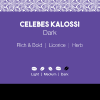
|
Joe’s Coffee House Celebes Kalossi |
|
CLICK TO CHECK PRICE |

|
Peet’s Coffee Major Dickason’s Blend |
|
CLICK TO CHECK PRICE |

|
Blue Bottle Coffee Giant Steps |
|
CLICK TO CHECK PRICE |
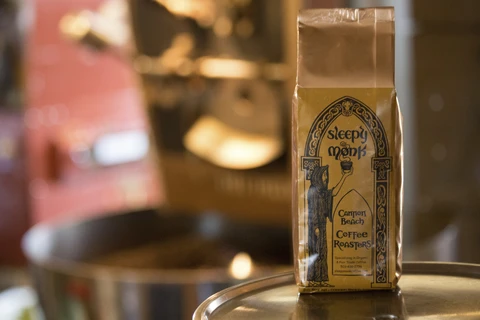
|
Sleepy Monk Coffee French Roast Sumatra |
|
CLICK TO CHECK PRICE |
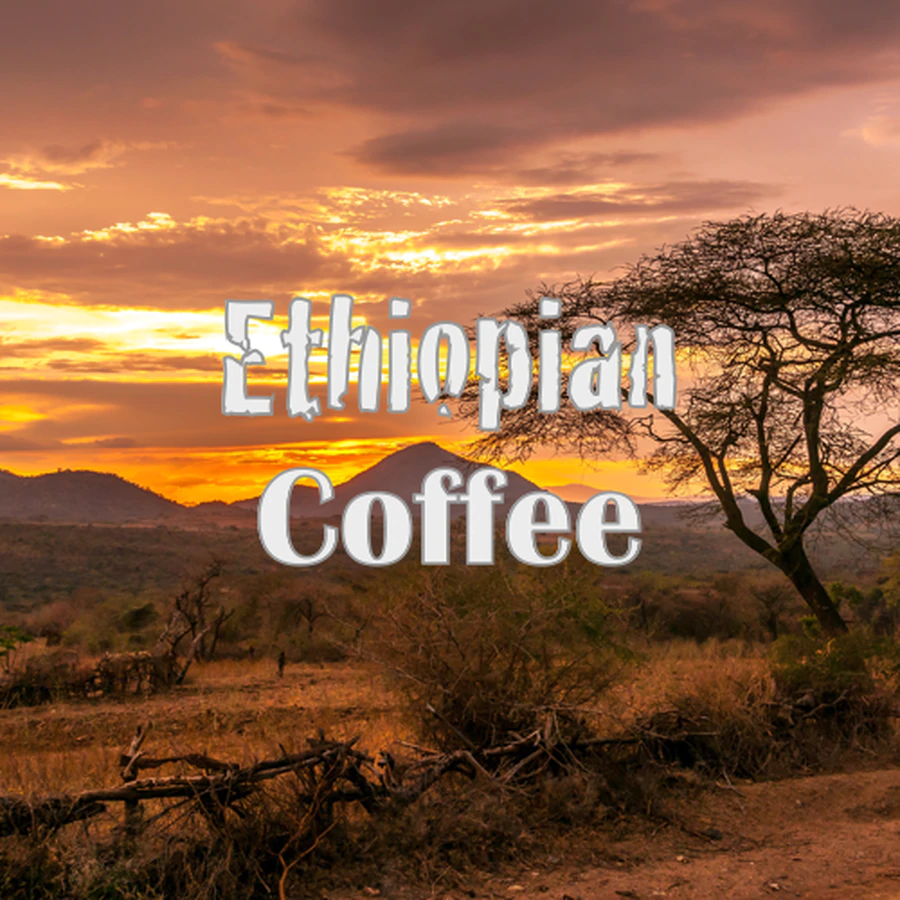
|
Volcanica Coffee Ethiopian Yirgacheffe |
|
CLICK TO CHECK PRICE |

- Origin: Masalle, South Sulawesi
- Flavor Notes: Rich, Bold, Herb, Licorice, Earthy, Creamy, Sweet, Full-Bodied
- Roast Profile: Dark Roast

- Origin: Signature Blends
- Flavor notes: Rich, smooth, and complex flavors
- Roast Profile: Dark Roast

- Origin: Uganda, Papua New Guinea, and Sumatra
- Flavor notes: Cocoa, toasted marshmallow, graham cracker
- Roast Profile: Medium-Dark Roast

- Origin: Sumatra
- Flavor Notes: Very Full Body, Smoky, French Roast
- Roast Profile: Dark French Roast

- Origin: Ethiopia
- Flavor notes: Floral & Fruit
- Roast Profile: Medium Roast
As mentioned, the beans you choose can make or break your end result. All of our picks were chosen for their nuanced flavors that are best experienced when using a French press.
1. Joe’s Coffee House – Celebes Kalossi Coffee – Our Top Pick – Hints of Herb and Licorice
Specifications
Origin: Masalle, South Sulawesi
- Flavor Notes: Rich, Bold, Herb, Licorice, Earthy, Creamy, Sweet, Full-Bodied
- Roast Profile: Dark Roast
With only a limited amount grown each year, this rare coffee hails from the highlands near the city of Kalossi on Sulawesi, one of the islands in the Indonesian archipelago. Many of the trees it grows on are over 250 years old, supposedly predating the arrival of the Dutch on the island. The impressive maturity of the trees imbues the coffee beans with a sweet, earthy flavor enriched by hints of herb and licorice, with a well-balanced acidity.
This is one of my most favorite coffees and I’ve been getting it for the last couple years. It’s hard for me to describe the aftertaste, maybe it’s the licorice, but it’s one of the best things about this coffee.
From a reviewer on Joescoffeehouse.com
The wet hulling processing method required by the humidity of the region, combined with the high altitude (around 4,300 feet) that the beans are grown at, results in a rich, full-bodied coffee with a creamy texture, and a sweetness that really shines when brewed using a French press. This is a coffee with a long and rich heritage that you should get while you can.
2. Peet’s Coffee – Major Dickason’s Blend – For Lovers of Bold Flavors – Classic Blend, Dark Roast, Complex Notes
Specifications
Origin: Signature Blends
- Flavor notes: Rich, smooth, and complex flavors
- Roast Profile: Dark Roast
Peet’s have been making coffee for over 50 years and this rich, dark roasted blend is their best seller. Originally developed by the company’s founder, working with one of their most loyal customers, they managed to combine coffees from some of the best regions in the world. Luckily, they’ve managed to get the best flavors from each strain.
A rich, full bodied classic blend, Major Dickason’s is a full-bodied coffee that has a multi-layered flavor with complex notes. It owes its complexity to its diverse components and heritage. It has a wonderfully smooth feel and a bold, powerful aroma that is not for the faint of heart. It’s a great coffee to choose if you seek out strong flavors.
It’s also reliably fresh, as Peet’s roasts it in small batches the same day you order it. It is packaged as soon as it comes out of the roaster and is shipped to you within 24 hours. The company says that it’s best brewed using French press.
3. Blue Bottle Coffee – Giant Steps – A Delicious, Chocolaty Blend – Uganda, New Guinea, and Sumatra, a Medium-Dark Blend with Layers of Flavor
Specifications
Origin: Uganda, Papua New Guinea, and Sumatra
- Flavor notes: Cocoa, toasted marshmallow, graham cracker
- Roast Profile: Medium-Dark Roast
One of the lighter options on our list, this medium-dark roasted blend from Blue Bottle Coffee mixes organically grown beans from Sumatra, Papua New Guinea, and Uganda to create a delicious brew with layers of flavor. Named for John Coltrane’s Jazz classic, it creates a viscous drink that shares some of the complexity of its namesake when brewed.
The main flavor and aroma you’ll get from this sweet, earthy coffee is almost fudge-like chocolate, with hints of marshmallow and toast. It’s a great blend that doesn’t require a hugely refined palate to enjoy, so it’s a good option for sharing with friends. Its chocolaty flavors shine through even more when you add milk or cream.
The Giant Steps coffee is subjected to regular, rigorous testing by Blue Bottle’s quality control team. It is roasted, packaged, and shipped within 24 hours or less of the order. This is a high-quality coffee that everyone can enjoy.
Blue Bottle Coffee also offers a coffee subscription service and sends your beans depending on your taste, preferred brew methods, and more. You can read our reviews of the best coffee subscription services here.
4. Sleepy Monk Coffee – French Roast Sumatra – Great if You Like Smoky, Fully Bodied Coffee – Very Full Body, Smoky, French Roast = French Press
Specifications
Origin: Sumatra
- Flavor Notes: Very Full Body, Smoky, French Roast
- Roast Profile: Dark French Roast
This high-altitude, single-origin Indonesian coffee is grown on Sumatra. Organically grown, wet hulled, and then sun-dried, this dark French roast coffee has a very full body and a bold, smoky flavor. It is perfectly suited for French press. This makes sense, after all: French roast coffee should suit French press coffee, right?
It produces a smooth, velvety cup of coffee that has an earthy aroma with hints of mushroom due to the wet hulling process. It has a real kick to it, even though it has less acid and caffeine thanks to the roast.
Freshly roasted in small batches at Sleepy Monk’s roastery, and delivered straight to your door, this not-so-famous coffee is a great way to start your day.
5. Volcanica Coffee – Ethiopian Yirgacheffe – An Authentic Coffee for Third Wave Connoisseurs – Ethiopian Yirgacheffe, Medium Roast, Floral & Fruit
Specifications
Origin: Ethiopia
- Flavor notes: Floral & Fruit
- Roast Profile: Medium Roast
This medium roasted coffee comes from Yirgacheffe region of Ethiopia, the ancestral homeland of Arabica beans. It doubles down on its traditional origins, as the majority of the beans grow wild.
While medium roasts aren’t usually the best choice for a French press, that’s not the case here. It’s normally a somewhat acidic coffee. However, using a French press tamps this down so that the sophisticated mix of pineapple guava, strawberry, lavender, and cedar, can come through. Its finish has a touch of dark chocolate, and you can really highlight the inherent sweetness of the beans with a French press.
With a plush, full texture, drinking this flowery, robust coffee is an authentic experience that any coffee lover can’t help but enjoy. It’s also also has a decaf option available. If you’re into decaf coffee, see our top picks here.
Best Coffee for French Press – The Bottom Line
There’s a reason that most of the coffees on our list are dark roasted – the extra time in the roaster enhances the natural flavorsome oils. Also, French presses really brings out the best of the ground coffee while reducing their tendency towards bitterness and enhancing the sweetness.
In the end, picking out one single coffee brand or variant as the best coffee for French press is impossible. For example, what’s considered as the champagne of the coffee world, the Blue Mountain Coffee, tastes unbelievably amazing when brewed using the French Press.
In another note, while the dark roast variety is more popular around the world, the final choice is up to you and your palate and preference.
FAQs
The right ratio for French press is a matter of personal taste, of course, but it’s recommended that you start with about a 15:1 water to coffee ratio. This uses more coffee than the ratio for pour over, because the French press infusion method is a slower extraction than pour over. Start with a ratio of about 65g of coffee per liter of water (adjusting for your French press coffee maker’s volume, of course).
French press coffee is stronger than drip coffee, because the oils and sediment remain in the brew after you press the plunger. This, plus the higher ratio of coffee to water, means that French press coffee has a richer flavor and a fuller texture than drip or pour over coffee. If you’re talking about caffeine, French press coffee typically has less caffeine than other brew methods because of the coarse grind size (4). When selecting coffee beans and roasts, always consider the brew method you intend to roast. Here’s where we compared pour over and French press coffee.
You keep French press coffee hot by pouring it into an insulated mug or thermal carafe. We recommend decanting French press coffee immediately after brewing, as otherwise the contact with the coffee grounds can continue extraction and lead to bitter coffee.
Yes, you can use instant coffee in your French Press but we don’t guarantee that it’s going to taste good. Many instant coffees are also too fine for French Press filters so it might result in some clogging. It also defeats the purpose of being ‘instant’.
- Coffee Brewing. Retrieved from http://www.coffeeresearch.org/coffee/brewing.htm
- Coffee Science: How to Make the Best French Press Coffee at Home. Retrieved from https://www.seriouseats.com/2014/07/how-to-make-better-french-press-coffee-tips-technique-grind-timing.html
- The History of Coffee. Retrieved from http://www.ncausa.org/about-coffee/history-of-coffee
- Tucker, A. (2018, October 24). The way you brew your coffee affects the caffeine levels-here’s how. Retrieved from https://www.wellandgood.com/good-food/coffee-brewing-caffeine-connection/

Coffee expert and industry insider, I’ve dedicated years to mastering the art and science of coffee making. From scrutinizing particle fineness to evaluating burr shapes, I delve into the minutiae that elevate coffee from good to exceptional. Whether it’s a complex pour-over or a robust espresso, my insights cater to those who don’t just drink coffee, but experience it.


